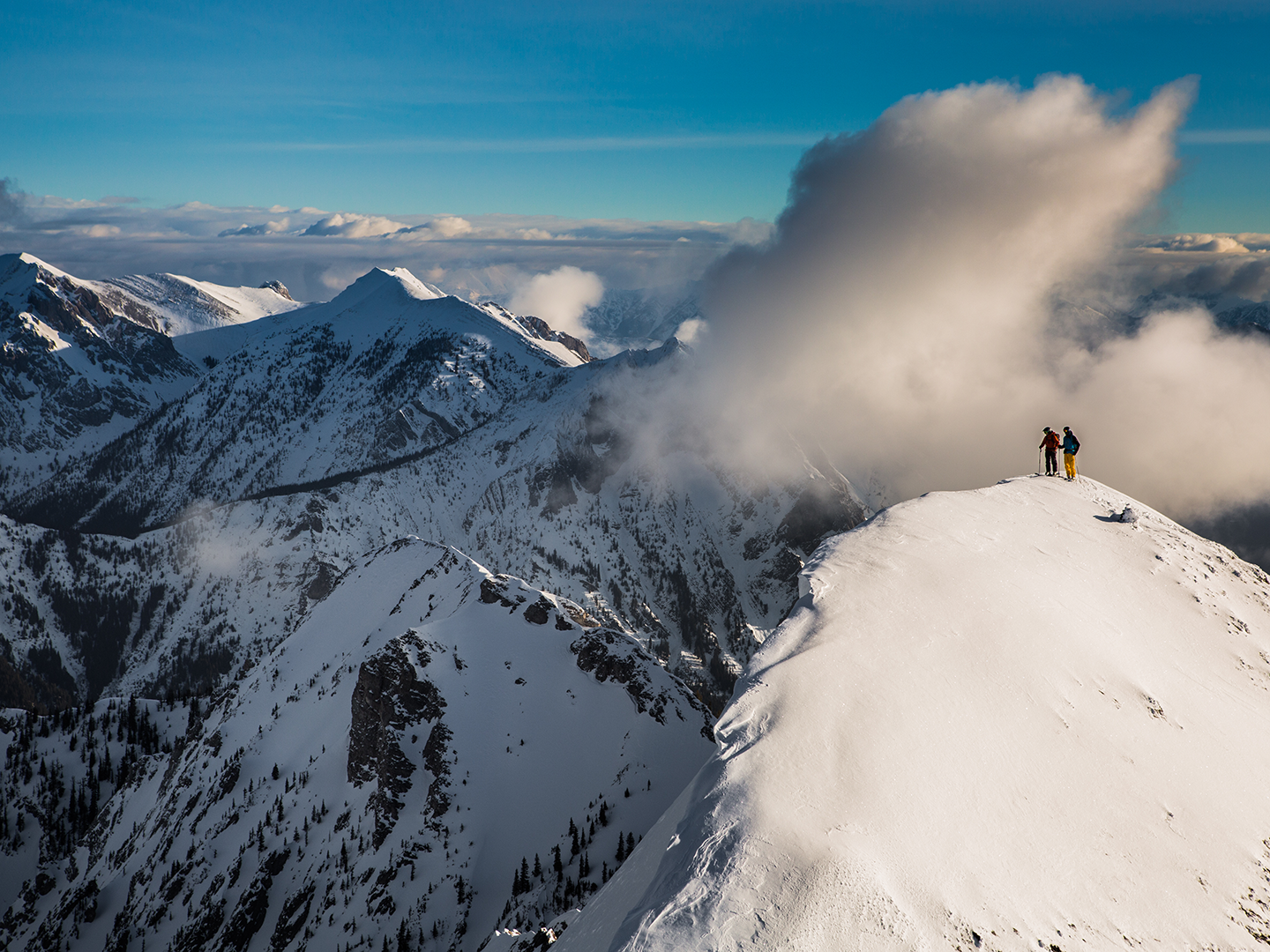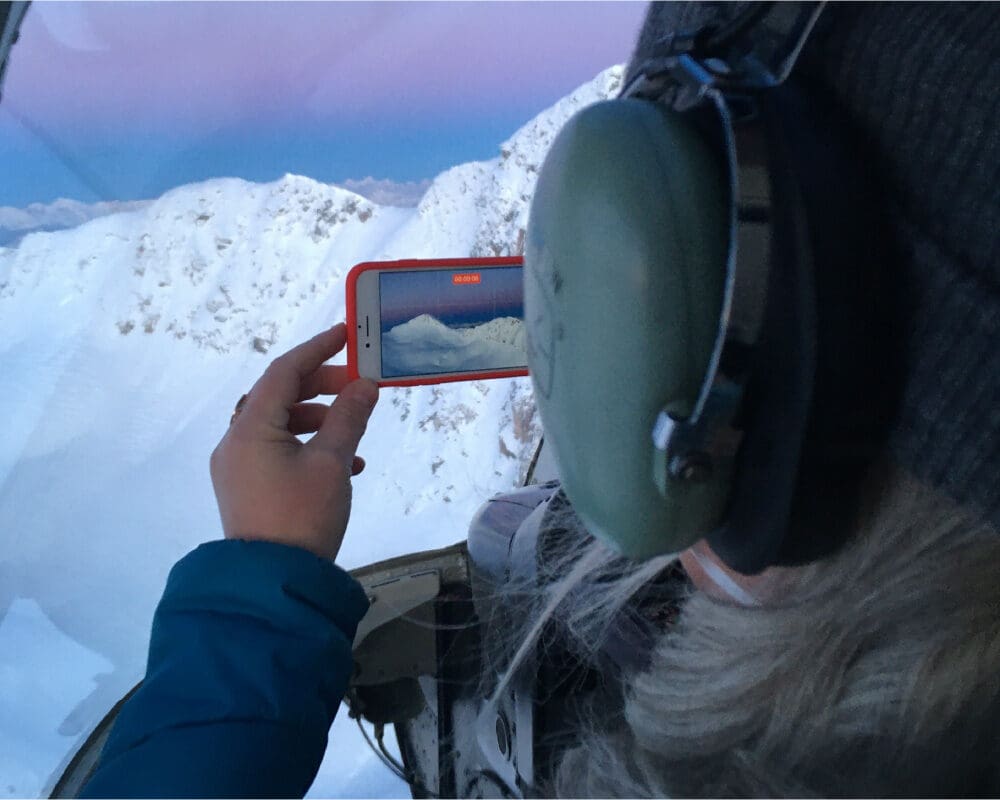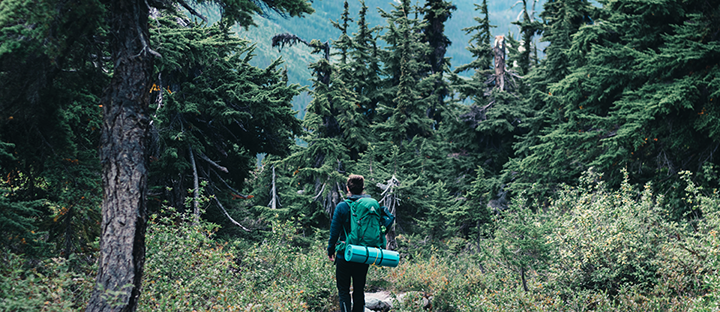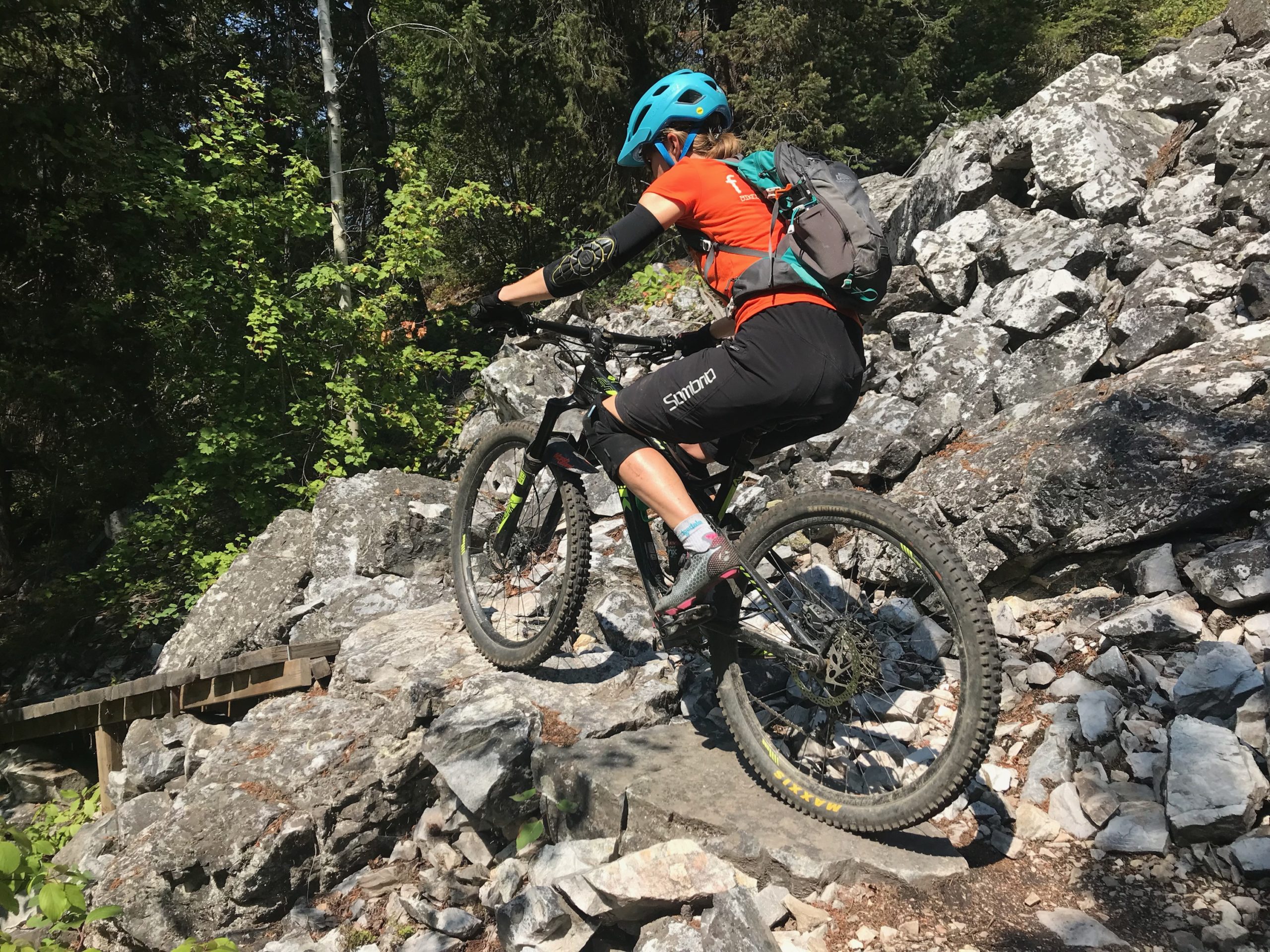Insight from four years of collaborative recreation ecology research
In recent years, there has been explosive growth in outdoor recreation, especially in parts of the Yellowstone to Yukon region.
While recreation can bring many positive benefits for people and communities, this pressure can also unintentionally impact sensitive species, increase tension across different user groups, and affect the quality of outdoor experiences.
More so than ever, there is a need for innovative approaches for monitoring and managing recreation across the landscape.
A lack of current, accurate, and detailed information of where, when, how and how many people are recreating remains a key challenge facing land-use and recreation managers. Yellowstone to Yukon Conservation Initiative’s (Y2Y) collaborative recreation ecology research with the University of Northern British Columbia (UNBC) aims to fill these critical gaps.
Better recreation information contributes to evidence-based recreation planning and management, creating improved experiences for people and security for wildlife habitat.
By filling information gaps and tackling these issues now, managers and communities can stay ahead of evolving challenges that come alongside the growth of recreation.
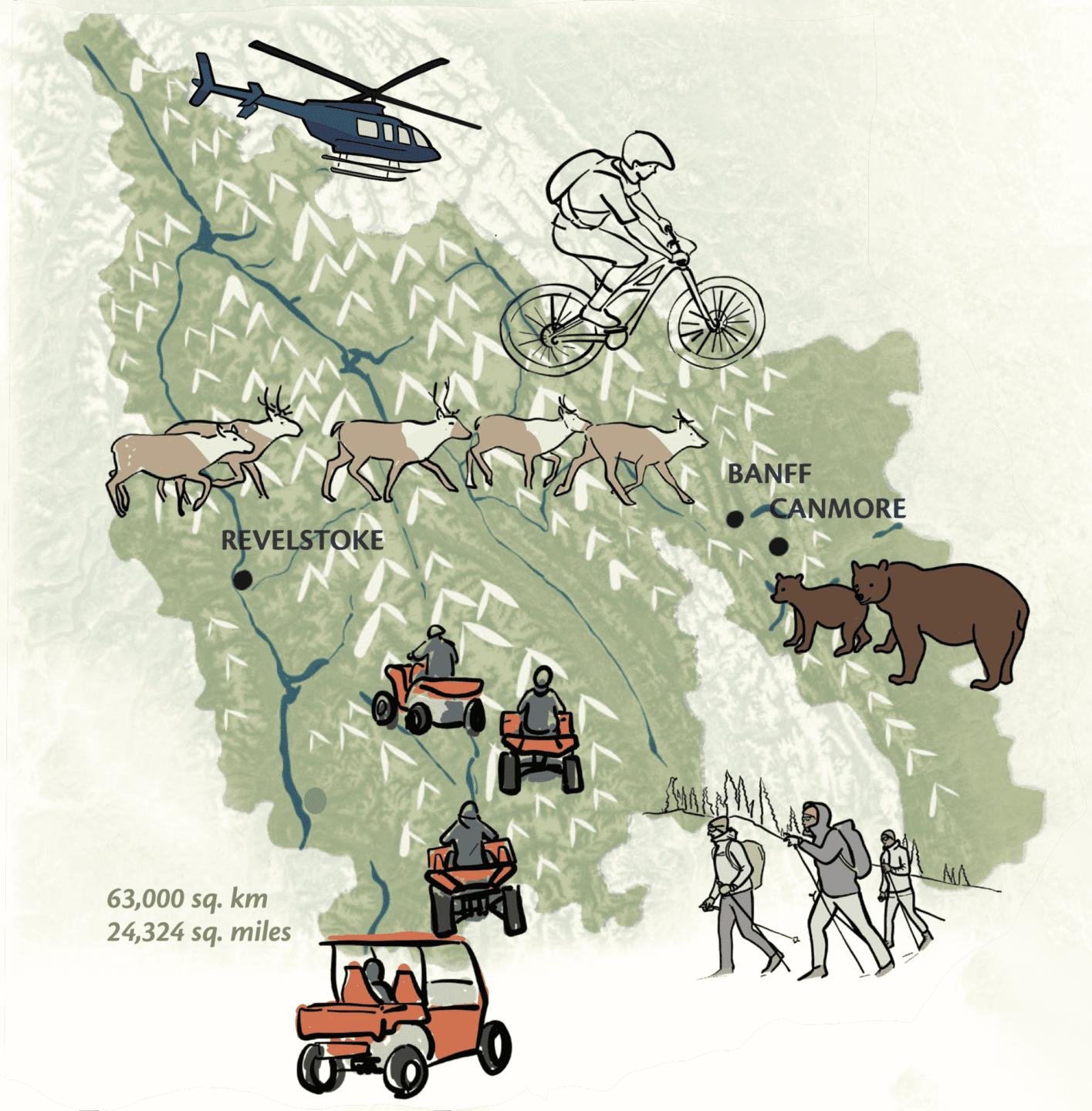
Studying where, when, how, and how many people recreate
Since 2020 researchers at the University of Northern British Columbia (UNBC) and Yellowstone to Yukon Conservation Initiative (Y2Y) have conducted extensive recreation research, using a combination of traditional and innovative technologies, to understand the intersection of recreation and wildlife.
Y2Y collaborated with communities and partners to compile recreation and wildlife data to:
- Better understand the recreation footprint with respect to documented and undocumented trails and type of use, including motorized and non-motorized activities.
- Compare data from traditional and user-generated technologies (i.e., fitness and outdoor adventure apps) for monitoring recreation and to provide recommendations for managers.
- Produce seasonal maps of predicted motorized and non-motorized recreation intensity and maps of wildlife habitat quality for three sensitive species: grizzly bears, mountain caribou, and wolverines. Then, using these maps, identify the areas of overlap between recreation and high-quality wildlife habitat.
Our partners include provincial and federal government, Braided Knowledge Environmental Consulting, Conservation Science Partners, Nature Conservancy of Canada, Biological Sciences – University of Alberta, and other research experts in the field.
This collaborative research is outlined in our research summary: ‘Protecting wildlife through responsible recreation.’ (Summer 2024)
Refer to the ‘Research and Reports’ section at the end of this post for links to all current scientific papers and reports associated with this research.
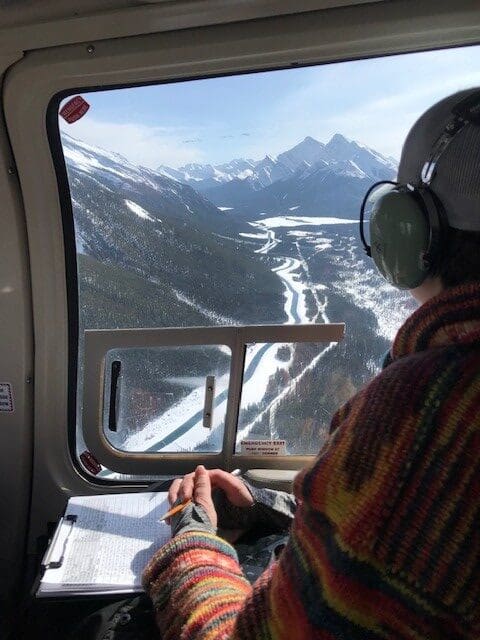
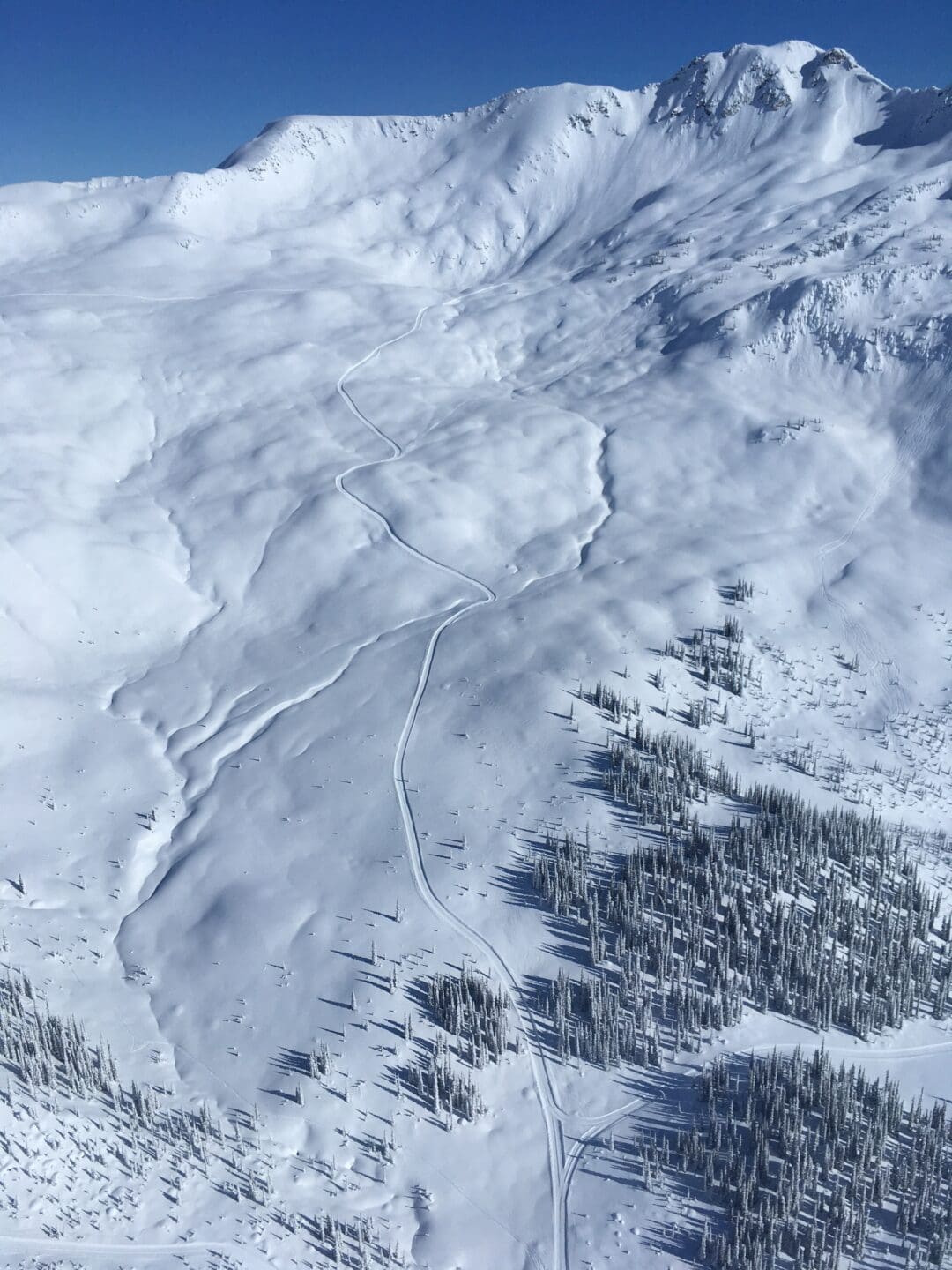
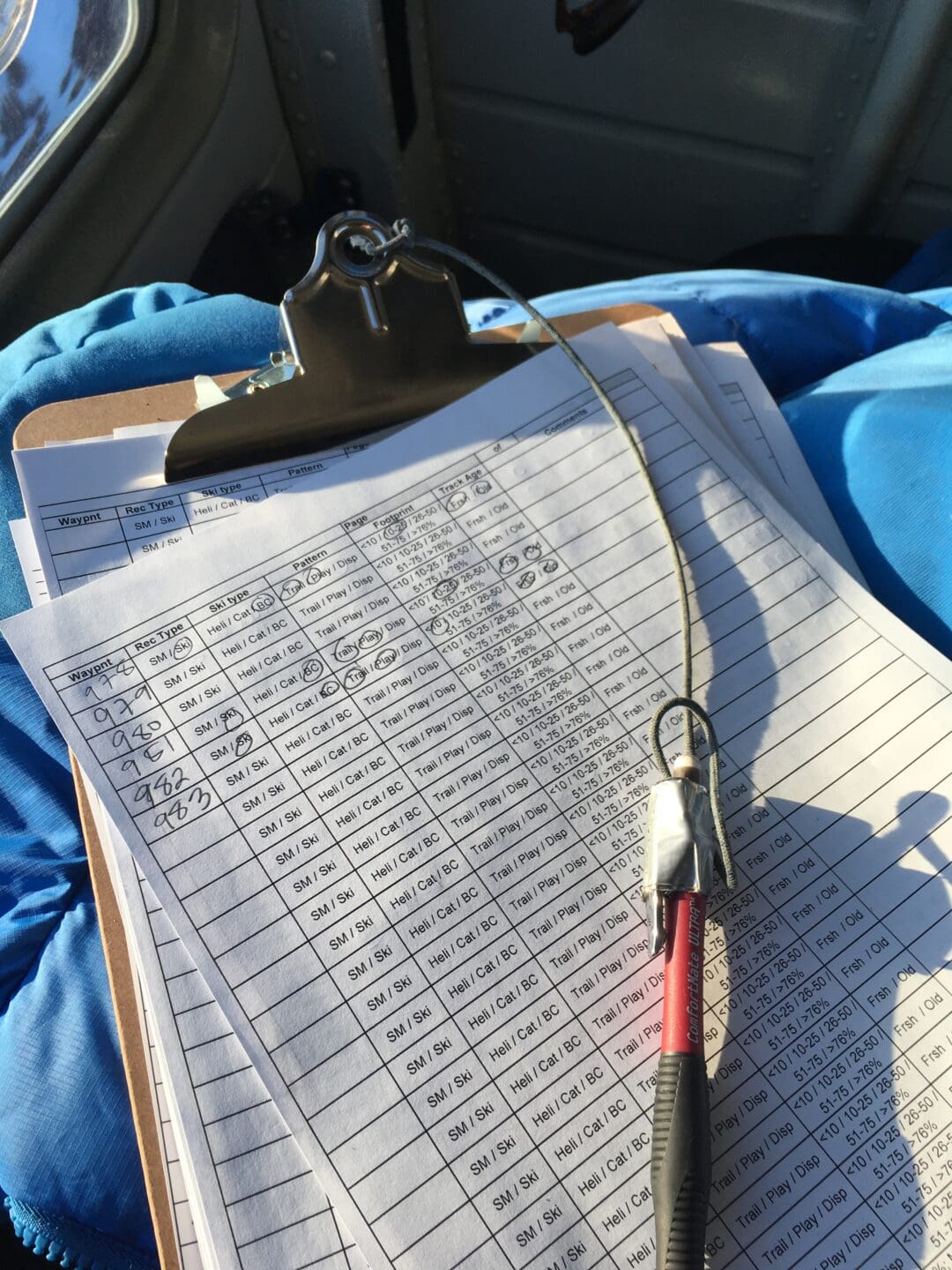
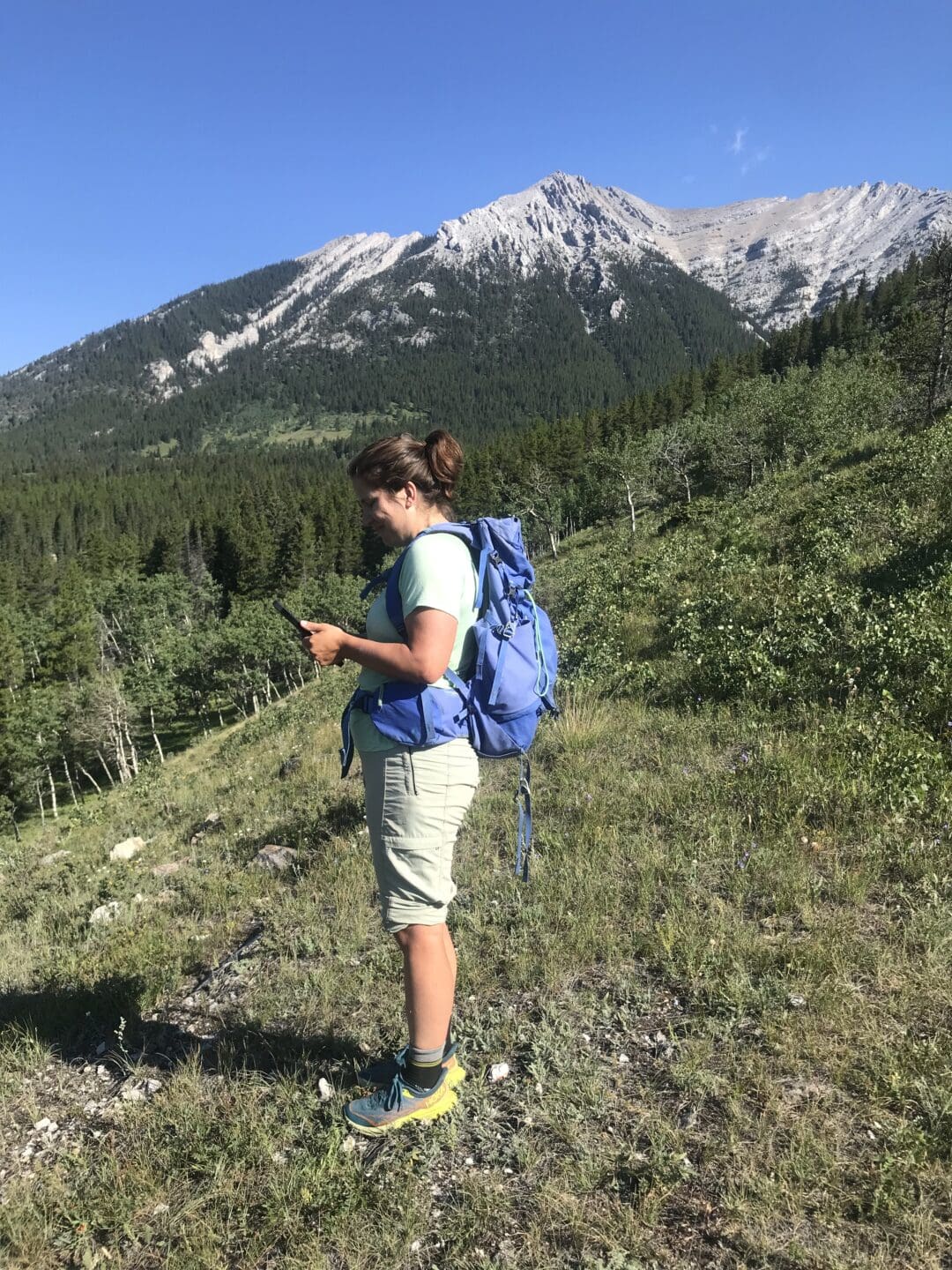
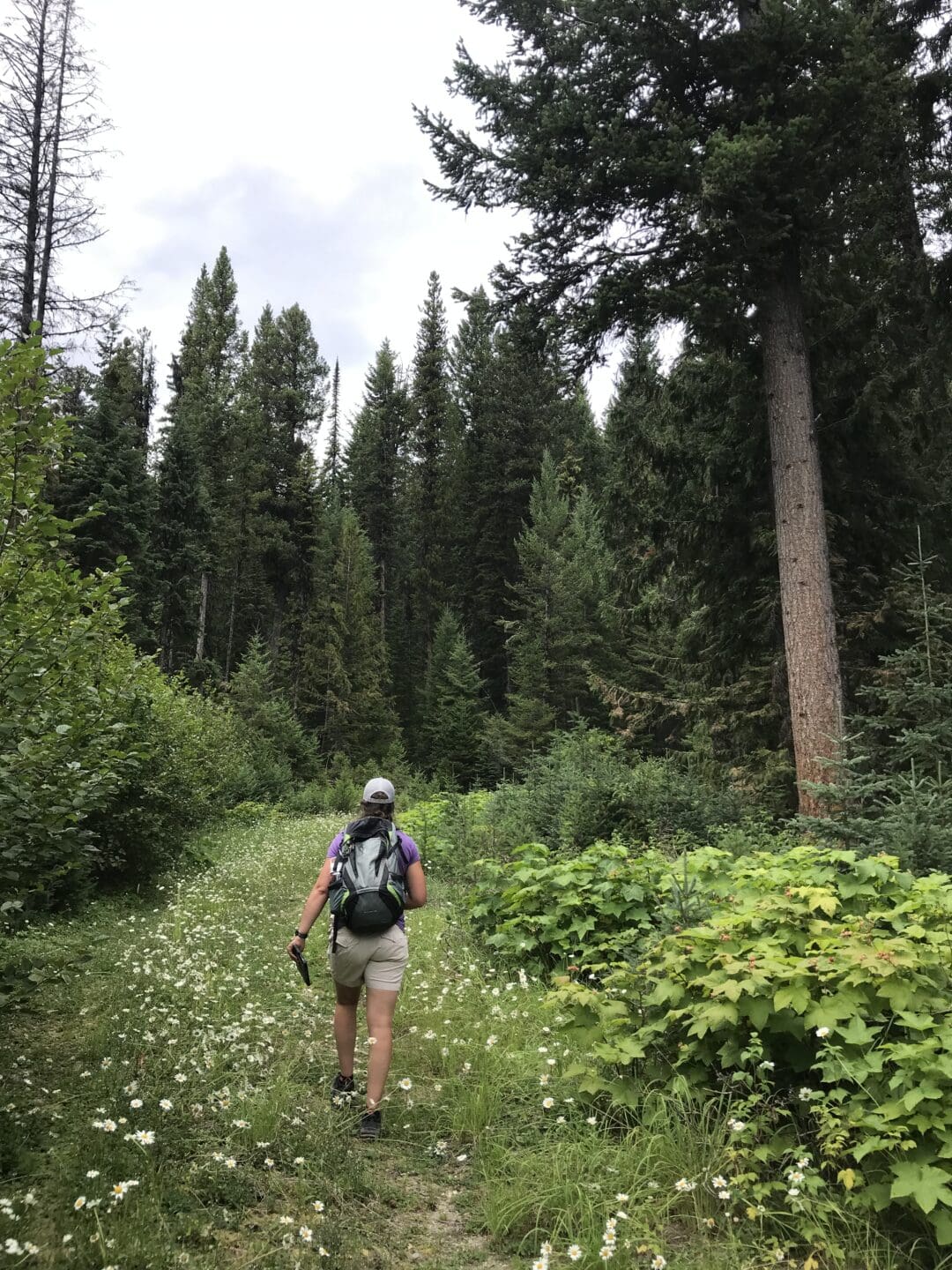
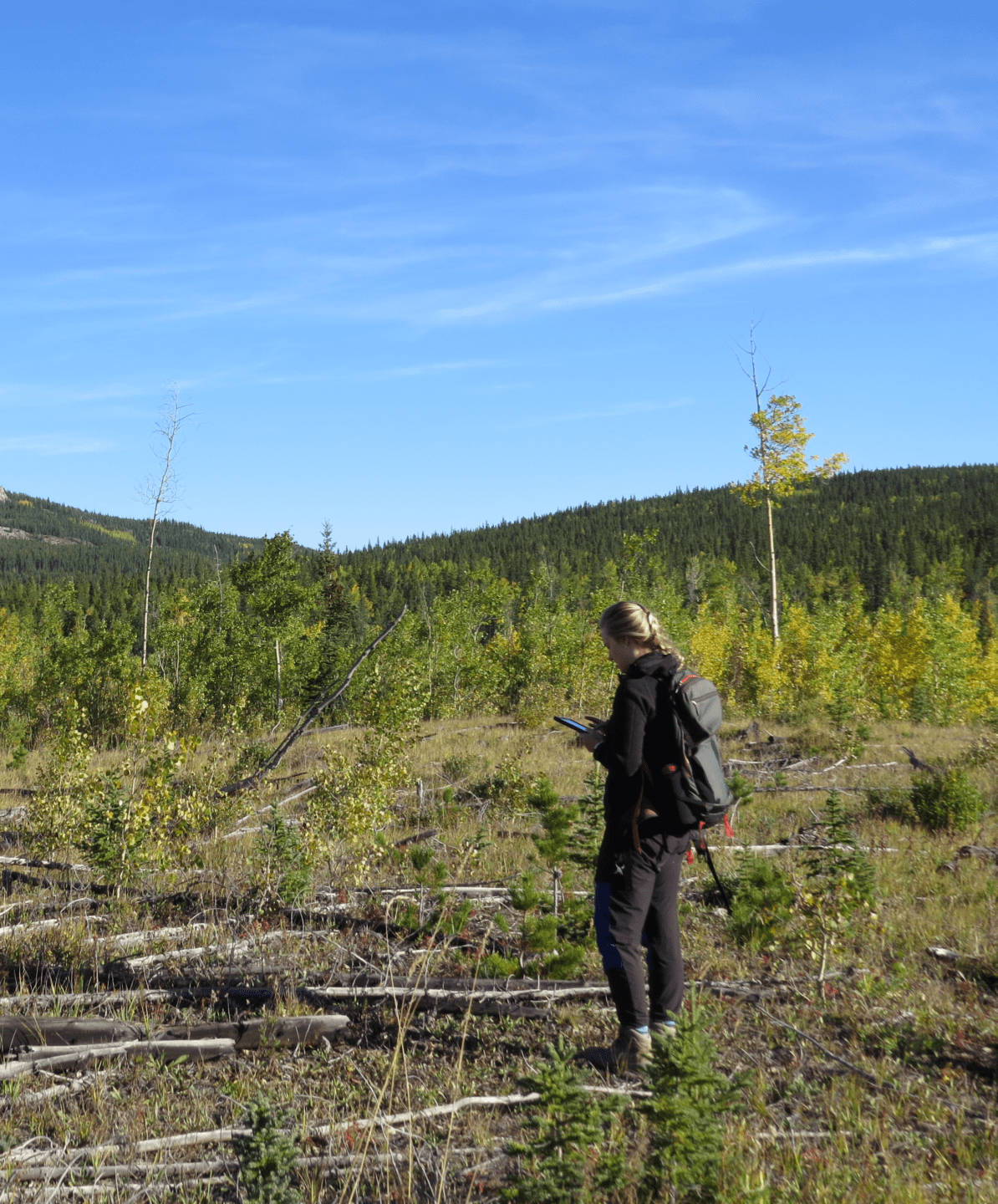
Top takeaways from four years of research
2024 marked the completion of our collaborative recreation ecology research.
These are some of our key findings:
1. To reduce the impacts of recreation on wildlife, we must first understand what activities are happening.
The Y2Y and UNBC research team found a large gap in recreation trails data. We mapped approximately 54,000 kilometers (33,500 miles) of trails and linear features, such as resource roads, cutlines, pipelines and transmission lines.
We found that 27 percent of all the mapped trails were undocumented, with most of these undocumented trails lacking information on activity types.
Learn more about these findings in this scientific paper and mapping report.
2. We can use data from both traditional tools and user-generated tools to better understand recreation patterns.
Combining data from both traditional tools (e.g., trail cameras, trail counters) and user-generated tools (e.g., Strava Metro) can fill in data gaps, address tool biases, and provide a better understanding of recreation patterns.
Learn more about these findings in this scientific paper and the below infographics, which outline these tools’ strengths and weaknesses and provide guidance on which tool or combination of tools to use.
(click to expand)
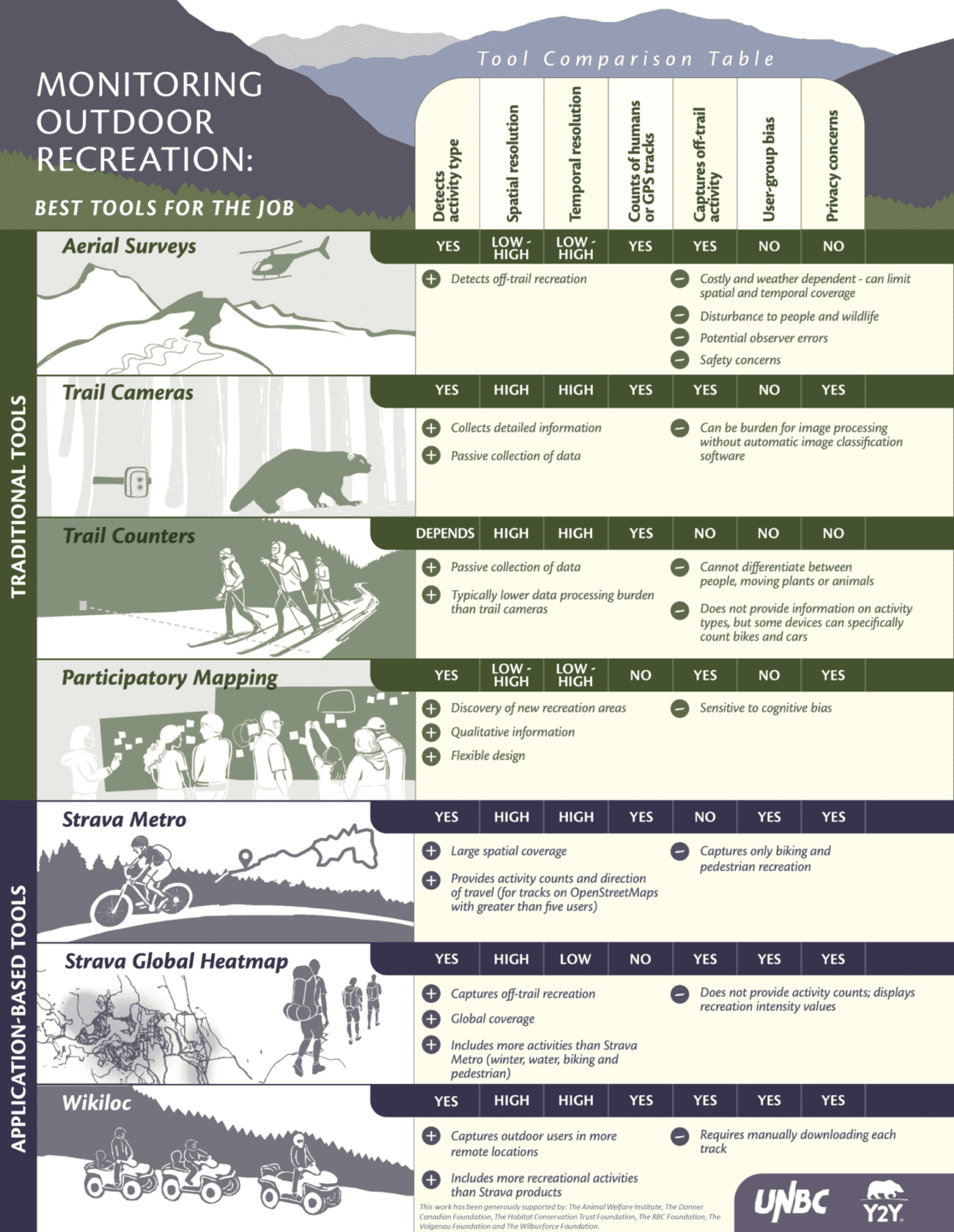
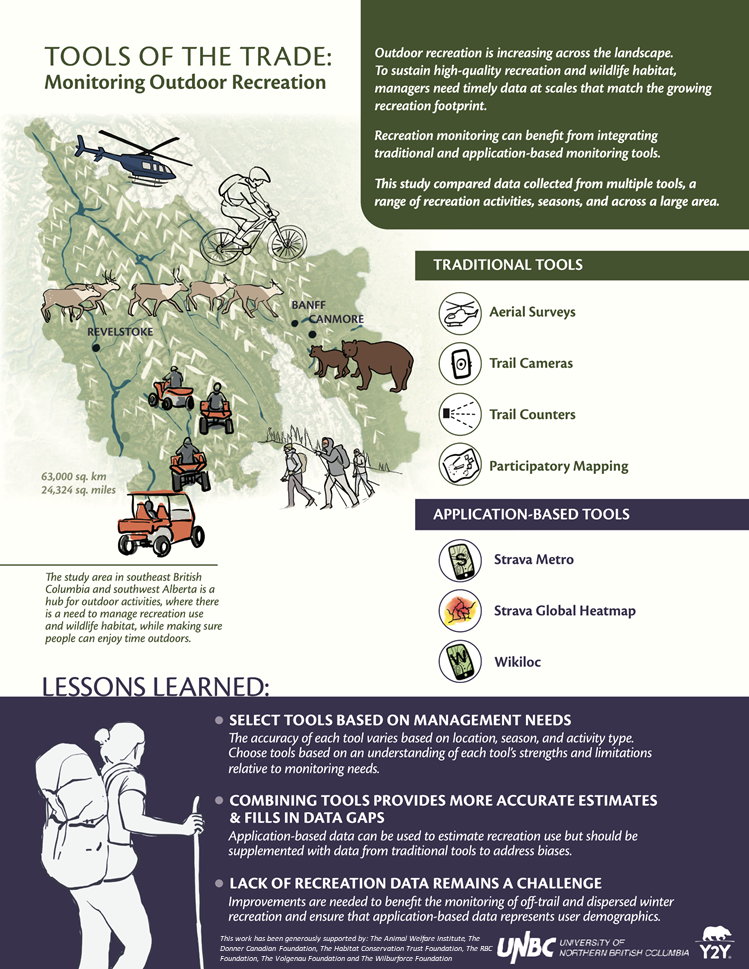
3. Science can help wildlife and people share space.
This research also reveals opportunities for better recreation management.
How wildlife responds to recreation and the overlap with where people are recreating varies by species, season, location, and type and intensity of recreation. For instance:
- Mountain caribou have specific habitat requirements. The species had the lowest proportion of high-quality habitat relative to available habitat, making them more at-risk to human disturbance.
- Wolverine overlap with high-intensity recreation in late winter occur at high-elevation areas, particularly in the Selkirk Mounts and Banff National Park. Wolverines are particularly sensitive during their winter denning season.
- Climate change-induced shortening of the recreation season and shrinking of the areas available for skiing and snowmobiling risks further strain on winter caribou habitat, as well as wolverine denning areas that are likely to see changes in the amount of snowpack on the landscape over time.
- In the spring, grizzly bears spend time in similar areas as humans. Grizzly bears had the highest overlap of high intensity non-motorized recreation and high-quality wildlife habitat in low-elevation, valley bottoms inside and outside protected areas that coincide with easy access to recreation areas.
Recommendations and next steps for managing recreation
Land-use planning, and appropriate recreation access and management, are essential components of mitigating the cumulative impacts humans have on nature — especially as we prepare for increasing population and visitation over time; and climate change, which is shifting where, when and how people spend time outdoors.
Key recommendations from this research include:
- Use a mix of traditional and user-generated tools to better measure recreation.
- Incorporate recreation data from a variety of traditional and user-generated tools into wildlife habitat models to improve evidence-based planning and management. Different sources of data account for biases in data and fill in data gaps, especially in areas with little recreation use but where sensitive species live.
- Conduct ongoing research on species-specific responses to recreation activities and recreation thresholds to provide seasonal and activity specific guidelines, especially for sensitive species like wolverine.
- Initiate and support the collaboration of wildlife researchers and outdoor recreation leaders to centralize, standardize and share data, and jointly explore management solutions. Current monitoring does not match the pace at which recreation is expanding.
- Harness the power of digital and outdoor fitness apps (e.g. All Trails, Trail Forks) to better understand recreation use and reach people with messages about responsible recreation.
- Establish evidence-based management practices and policy to protect sensitive wildlife from potential recreation impacts.
- Incorporate findings of this recreation ecology research into planning and decision making for new recreation proposals and current agreements.
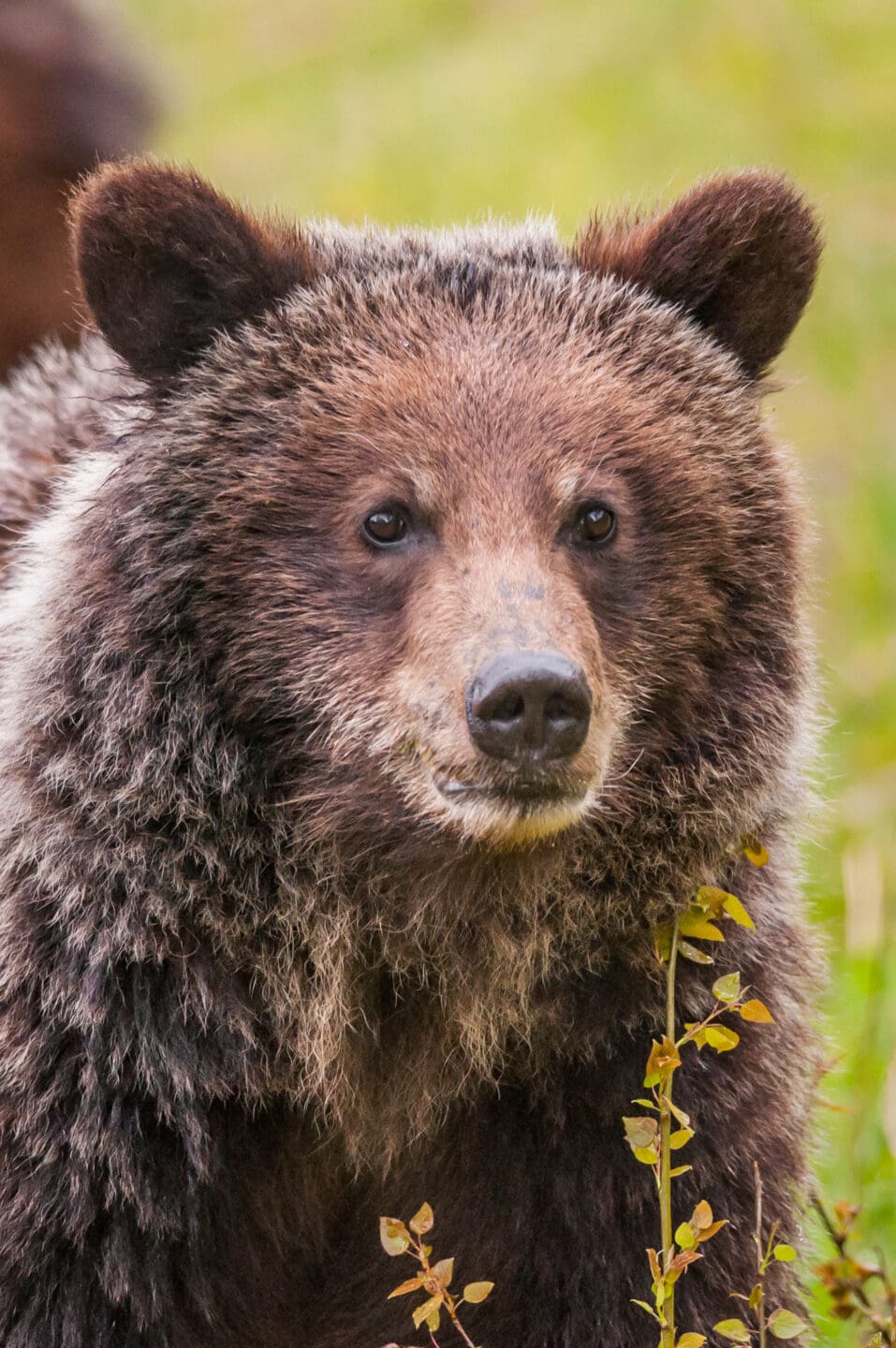
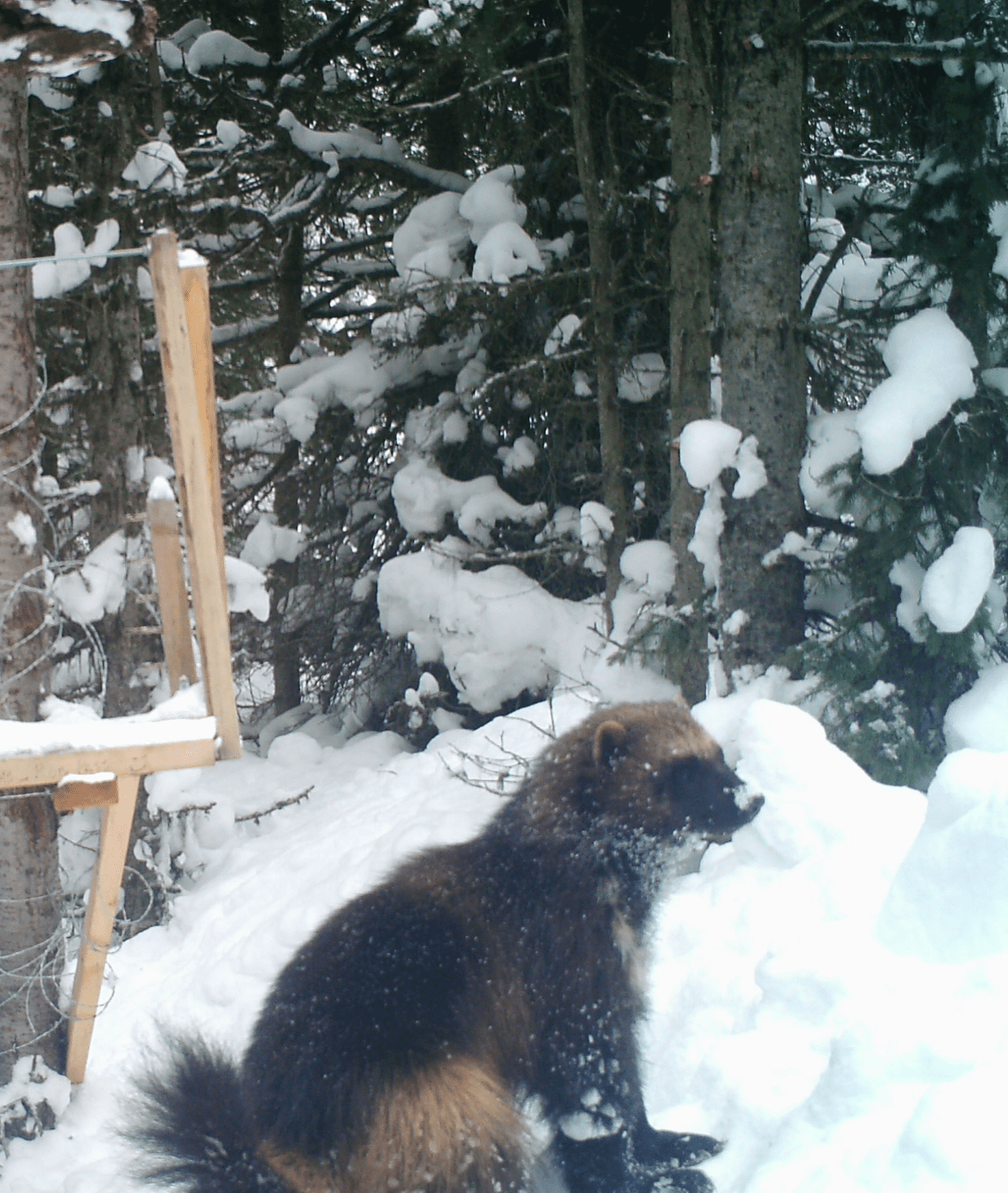
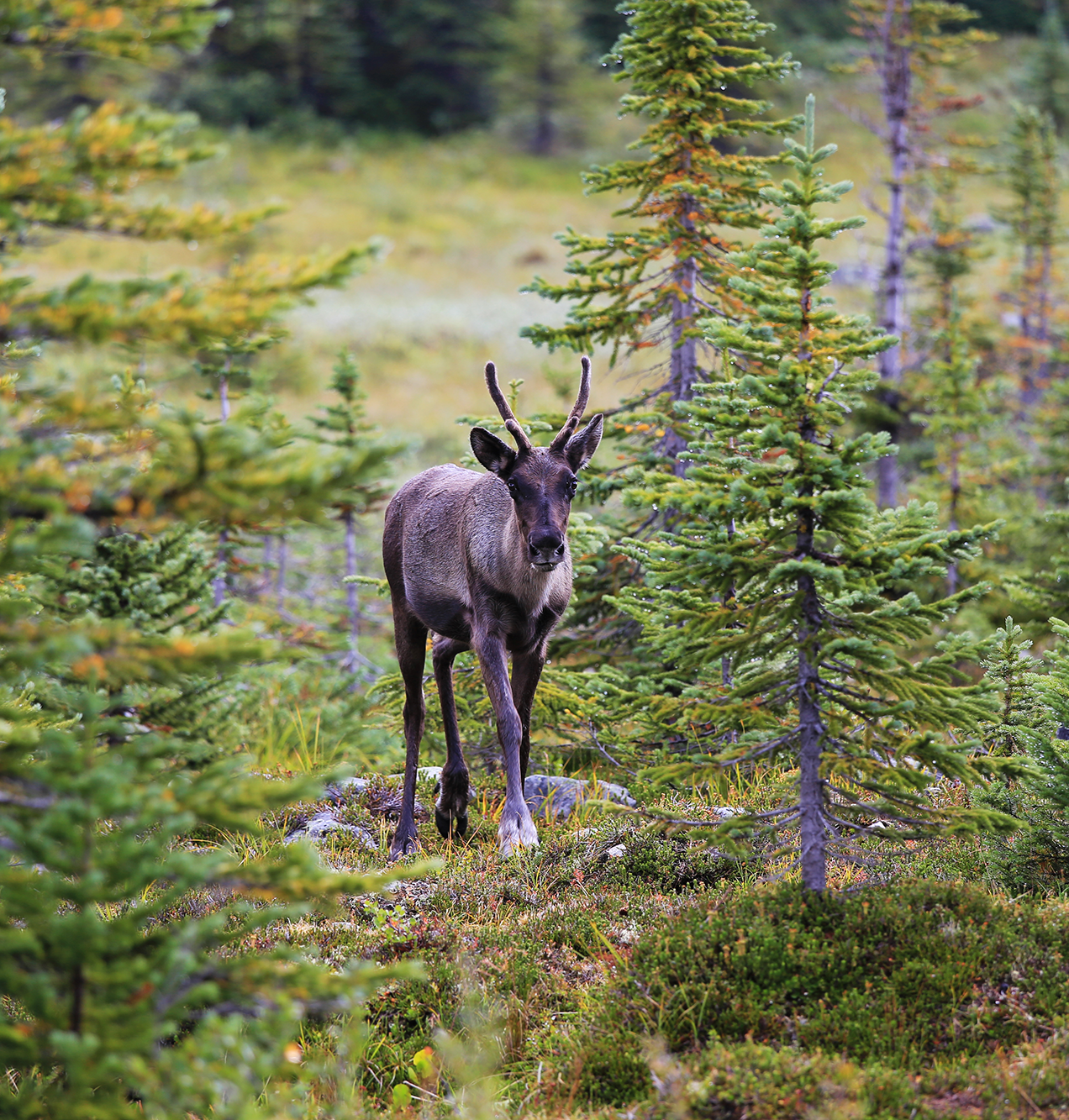
Going from research to conservation action
Research alone is not enough to address the challenges that come alongside the growth in recreation.
Collaborative projects that engage a variety of partners and communities help bridge the gap between innovative research, on-the-ground action and policy change.
To drive adoption of responsible recreation and conservation practices, Y2Y’s research team is sharing data and tools, and bringing our recommendations to government, conservation organizations, Indigenous communities, leaders in the recreation and research communities, and decision-makers. Many of these partners have been involved with this project from the start; and they are already making improvements to recreation management with wildlife needs in mind.
We also continue to conduct workshops, participate in webinars and conferences, and publish in science journals and media.
All together, these efforts aim to equip and empower decision-makers with the resources and tools needed to improve land and recreation management, making sure people can enjoy the great outdoors while minimizing their impact on wildlife.
Reports and research
- Protecting wildlife through responsible recreation. Research summary (2024).
- Advancements in monitoring: a comparison of traditional and application-based tools for measuring outdoor recreation, published in PeerJ Environmental Science in 2023 by Vilalta Capdevila et. al.
- Understanding the role of traditional and user-created recreation data in the cumulative footprint of recreation, published in the Journal of Outdoor Recreation and Tourism in 2023 by Loosen et. al.
- Synthesis of habitat models for management of wolverine (Gulo gulo): Identifying key habitat and snow refugia in the Columbia and Rocky Mountains, Canada, published in Global Ecology and Conservation in 2023 by Schepens et. al.
- Mapping recreational linear features beyond documented trailed in southwestern Alberta and southeastern B.C. A report prepared by Y2Y and UNBC in December 2022.
- Recreation ecology literature A selection of scientific journal articles, reports and graduate and undergraduate theses related to outdoor recreation and impacts on wildlife and the environment.
Tools
- [Maps] Interactive map showing wolverine habitat suitability
- [Infographic] Summary of key strengths and limitations of recreation monitoring tools
Funders and supporting partners
This multi-year project is a collaboration between Yellowstone to Yukon Conservation Initiative, University of Northern British Columbia and others including provincial governments, land managers, and researchers.
Thank you to all our partners and many people for shaping this research over the past four years, including: government scientists, land-use managers and planner, conservation organizations, interns, students, academic institutions, and independent researchers and consultant.
Project partners
- Biological Sciences – University of Alberta
- Braided Knowledge Environmental Consulting
- Conservation Science Partners
- Government of Alberta
- Government of British Columbia
- Nature Conservancy of Canada
- Parks Canada Agency
Project funders
Generously supported by:
- Animal Welfare Institute
- Audain Foundation
- Calgary Foundation
- Donner Canadian Foundation
- Eco Canada
- Habitat Conservation Trust Foundation
- MITACS
- RBC Foundation
- The Volgenau Foundation
- Wilburforce Foundation
Additional reading and project news
- Let’s give the wary wolverine some space. Mongabay. Jan. 12, 2024.
- Advancing Evidence-based decision-making in large landscape conservation through the social science: A research agenda for the Yellowstone to Yukon region, published in Mountain Research and Development.
- Nearly one-quarter of trails in southern B.C., Alberta unmapped and unmanaged: study | Globe and Mail, Jan. 24, 2023
If you are looking for resources on responsible recreation and outdoor recreation and wildlife, please contact us.
Post last updated in August 2024.
